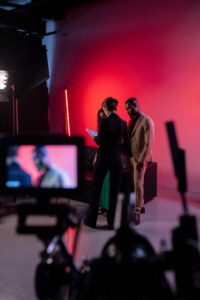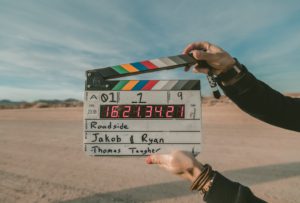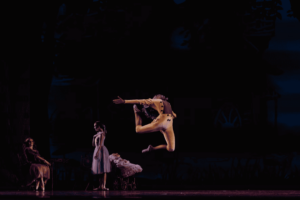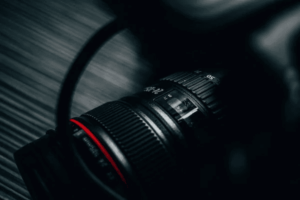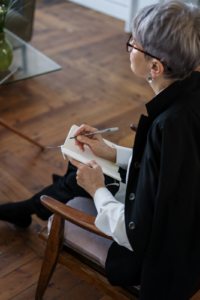Wondering how to make a movie? The filmmaking process goes beyond the mere act of filming. To be a successful filmmaker, you’ll need to start with an idea and a screenplay. Once you have these basic elements in place, you’ll still need to get the right equipment and crew, find a location, fund your budget, and more before you even get to start filming the project.
All in all, creating a film is a long and, at times, daunting process, but it’s also incredibly rewarding when your finished product conveys the story and visuals you had in mind when you first started out. Here are the essential components you need to know when you’re learning how to make a movie.
Development of the Film
Before you get the equipment together, find your location, and start shooting, you need to carefully develop your project. Developing a film starts with finding your story. Frequently, the first step is writing your own script, partnering with a screenwriter to write one for you, or finding a script that’s already written.
Writing the Script
If you’re writing one on your own, you’ll need to know how to properly format your script before diving in.
Putting together a script includes:
- Coming up with a visual idea and characters
- Expanding and develop your initial idea into a story with character arcs and development
- Writing the screenplay (or, finding a writer to work with) to have a physical copy of your idea about to come to life
- Using genre tropes
- Revising the script to be the best it can be
Don’t forget key software that structure and format the script as you write. Commonly used options include:
Looking for more resources? Great books for aspiring filmmakers include:
- “Characters & Viewpoint (Elements of Fiction Writing)” by Orson Scott Card
- “Creating Unforgettable Characters: A Practical Guide to Character Development in Films, TV Series, Advertisements, Novels & Short Stories” by Linda Seger
- “Screenplay: The Foundations of Screenwriting” by Syd Field
- “Story: Substance, Structure, Style and the Principles of Screenwriting” by Robert McKee
- “The Screenwriter’s Bible” by David Trottier
- “Save The Cat! The Last Book on Screenwriting You’ll Ever Need” by Blake Snyder
You’ll start raising money for your film at this point (and possibly getting a lawyer) as well.
Getting the Essential Equipment
Any film needs the right equipment, especially a high-quality camera. Choices include:
- Your smartphone (people do shoot great films on both iPhones and Androids these days)
- Camcorder
- A mirrorless camera like the Panasonic G85 or Fujifilm X-T3
- SLR cameras
You don’t even have to buy a camera. You also can rent from a local camera shop.
Then, get equipment that helps you get better quality when you film, including:
- External audio recorders
- Steadycams
- A dolly
Decide how you’ll edit your film, and think about the editing program or app you’ll use.
Pre-Production
Pre-production is everything you do to prepare for filming after you have a script ready to go.
Breaking Down the Script
The pre-production phase includes doing script breakdowns, which involves outlining every scene, character development moment, and visual you want to convey in the film. This helps you identify everything you need to prepare for in terms of budgeting, equipment, and other preparation.
You’ll also need to prepare a shooting schedule.
Thinking About Visuals
Thinking about how you want your film to look is an essential part of the process. Decide on the aesthetic for your film, considering the shots you’ll use: do you want smooth and expertly edited shots or a rough, handheld camera appearance to your film?
Knowing the different types of shots, such as wide, medium, and close up, is also key. Frame rate, color temperature, and light exposure are important, too.
You’ll need to create a storyboard for the film, too. As a graphic organizer used to plan out a narrative, a storyboard is an invaluable tool for any filmmaker that can help ensure everyone participating in the project is on the same page. Useful storyboarding software includes:
Other visual aspects include:
- Designing sets and costumes (you can even have actors provide their own clothing)
- Deciding on the types of lighting you’ll use, such as key lights, fill lights, high-key lighting, low-key lighting, and beyond
- Dressing sets
Scouting a filming location
You’ll also need to find a place to film. Resources to find places in your area or around the country include:
Start scouting locations where you could film. Questions to consider include:
- Can you get permission for the location?
- Do you have to pay to use a location for filming?
- Is a location safe for film?
- Will there be any interruptions to filming at a given location?
Budgeting the Project
At this point, you’ll also want to refine your budget. Include the costs for equipment, performers, crew members, and more.
Put together your cast and crew, including the director and cinematographer, also known as the director of photography. Then find people to work in departments such as:
- Set design
- Sound and music
- Casting
- Post-production
- Hair and makeup
Find crew members from:
When it comes to finding a cast, you can sign onto the SAG Ultra Low Budget Agreement to use professional actors for $100 a day. Other resources include:
Make sure you also get production insurance to protect your project from liability. Unions often require insurance as well.
Other pre-production tasks include:
- Planning the creative aspects of your project, often collaborating with the director and other departments
- Hiring the rest of the crew, like gaffers, sound engineers, and production assistants
- Tech scouts to make sure the location where you want to film will actually work when it comes down to shooting
- Wardrobe fittings
- Rentals and purchases to make sure you have all the necessary equipment to achieve your vision for your film
- Preparing and distributing call sheets
Production
Once production starts, you’ll want to measure your progress as you go along. Make sure your team remains involved and enthusiastic.
Filming
You’ve gathered and tested equipment and made sure to plan everything out. Now, it’s time to film. Film some practice shots before filming takes for each film. You’ll want to make sure you keep track of the best takes to save yourself time during the editing process later on. You might even shoot multiple takes of each scene from different angles to see what best captures the vision you have for your project.
Post-Production
Post-production tasks include:
- Hiring a post-production team
- Distributing raw footage
- Overseeing the first assembly cut
- Preparing music and audio
- Editing sound
- Music (resources such as Premium Beat and Audio Network are a big help)
- Mixing sound
- Doing visual effects and adding credits
- Color grading
- Putting together the final assembly
- Preparing subtitles and foreign versions

Scene from “The Fall Of The House Of Usher”
Editing
Editing is one of the most important parts of this phase. You’ll start with a rough cut. Check and change the order of clips, keeping in mind that the finished film is what matters, not individual shots. Once the order looks right, you can adjust individual clips as needed and add in things like sound, effects, and color correction. Sync up music and sound effects (and remember, don’t use music unless you explicitly have permission to do so). Then create title and credit sequences, and export your film to a digital format.
Post-production tools and editing software include:
- Blender
- Lightworks
- GIMP
- DaVinci Resolve Lite
- Audacity
- MPEG Streamclip
- Final Cut Pro
- Logic Pro
- Motion
Other film editing resources include:
- “Film Craft: Editing” by Justin Chang
- “Avid Uncut: Workflows, Tips and Techniques from Hollywood Pros” by Steve Hullfish
- “Dream Repairman: Adventures in Film Editing” by Jim Clark
Marketing and Distribution
Finally, you’ll distribute the film to make it available for audiences to view. You’ll also need to prepare promotional materials such as a movie website, set up submissions to festivals, and, ideally, sell your film.
If you’re interested in learning more about making movies, apply to Nashville Film Institute to gain professional qualifications as a filmmaker.



